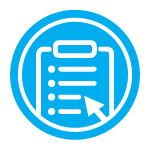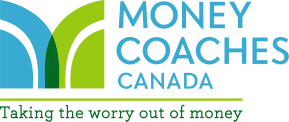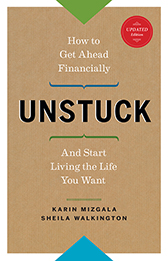Money Coach and Educator
Regardless of the time of year, it’s important that you have a solid understanding of the basics of registered Retirement Savings Plans (RSP) and Tax-Free Savings Accounts (TFSA). Before the annual contribution deadline approaches, let’s take a step back, learn about these two important savings vehicles, and discuss the best way to use them to invest for your retirement.
Before you decide between contributing to an RSP or a TFSA, make sure you understand the facts. Let’s first take a look at both.
Retirement Savings Plans (RSP)
- RSPs are registered through Canada Revenue Agency (CRA) and are designed to encourage us to save for retirement.
- RSPs can contain investments such as stocks, bonds, mutual funds, ETFs, GICs, and savings accounts.
- Contributions are tax-deductible based on your marginal tax rate when you put the money in. So, if you make $100,000 a year, your marginal tax rate is 43.41%. This means if you put $1,000 in an RSP, you’ll get about $430 “back”. If you make $30,000 a year, the same $1,000 contribution will get you about $200 back with your 20.05% marginal tax rate (all figures are for those living in Ontario).
- You defer paying tax on the money and any interest it gains until you withdraw it, presumably in retirement.
- When you withdraw the money, it is considered income and you will pay taxes on it according to your marginal tax rate at that time.
- Your RSP contribution limit for 2023 is 18% of earned income you reported on your tax return in the previous year, up to a maximum of $30,780. For 2022, the upper limit was $29,210. If you have a company pension plan, your RSP contribution limit is reduced.
- Any unused room is carried forward indefinitely. Check last year’s Notice of Assessment to see how much room you have available. You’ll pay a penalty if you over contribute.
- RSP has no starting age limit – anyone that has earned income and filed a tax return can contribute to an RSP the following year.
- RSPs need to be converted to a RIF (Retirement Income Fund) by the end of the year you turn 71. Then, RRIF owners must withdraw a certain amount each year.
 Interested in getting a second opinion on your investment portfolio?
Interested in getting a second opinion on your investment portfolio?
Click here to learn more about the Investment Report Card.
Tax-Free Savings Accounts (TFSA)
- In 2009, a new incentive for Canadians to save and invest was introduced.
- The annual contribution limit for TFSAs has changed from year to year. The annual contribution limit for 2021 is $6,500 and if you have been a Canadian resident since at least 2009 and have never contributed to a TFSA, you can contribute up to $88,000.
- Withdrawals from TFSAs result in additional contribution room in the year following the withdrawal.
- The name ‘Account’ is a little bit misleading. TFSAs can actually hold any type of RSP-eligible investment, including stocks, bonds, mutual funds, ETFs, or cash deposits.
- Any Canadian who is over the age of 18 and has filed a tax return can open a TFSA.
- Unlike RSPs, contributions are not tax-deductible.
- The best thing about a TFSA is any investment income (such as interest, dividends, or capital gains) earned inside your TFSA will not be taxed, ever. So, when you withdraw money from your TFSA, you do not have to pay any income tax on it.
If you have additional questions regarding how best to plan for retirement, or improve your overall financial well-being, a Money Coach can help. Or, if you are interested in a second opinion on your investment portfolio, consider the Investment Report Card.
This post first appeared in 2017. It has been updated with current data and/or new information and republished.




Hey there! This is my first visit to your blog! We
are a group of volunteers and starting a new initiative in a community in the
same niche. Your blog provided us valuable information to work on.
You have done a wonderful job!
Q: In my TFSA investment account, I hold a few stocks that collectively pay a monthly dividend of about $200. Can I start withdrawing that $200 without reporting it as income?
Hi Steve:
Great question! Generally, any withdrawals from a TFSA (whether from stocks, mutual funds, GICs, etc inside the account) are not considered income. This is because your original contributions were made with after tax dollars (meaning you already reported that income) and then any growth inside the TFSA is not considered taxable income. That all being said, I strongly recommend you consider checking with a money coach or advice-only planner to confirm the actual details of your particular situation, possible fees, etc, before you start withdrawing. Often a money coach/advice-only planner will help find optimal and personalized solutions for you; considering your short term cash flow, tax optimization,all while aligning things to balance with your longer term goals and future planning.
Hello,
Thanks for the great info! Q: If I make a contribution to my RSP using after tax income (say $1000), I understand I can then report this $1000 on my income tax, to receive a deduction. But I’m only receiving a deduction based on my after tax income amount. When I withdraw that $1000 from my RSP down the line, I’m paying tax on it again. Does this mean I’m paying tax on this money twice?
Confused and grateful for any clarification!
I am doing my daughters income tax, she has a Self directed retirement savings plan official contribution income tax receipt. Does this go on the RRSP site on the income tax form?
hen I did my 2017 taxes, I forgot that my pension was put into a mutual fund RSP in 2017 after i changed jobs. Do I go back and claim that as RRSP contributions on my taxes? I seem to be getting the run around from tax consultants, and even the person I spoke to at CRA had no idea if an RSP was the same as an RRSP.
Hi Leslie, the best thing to do would be to contact CRA again.